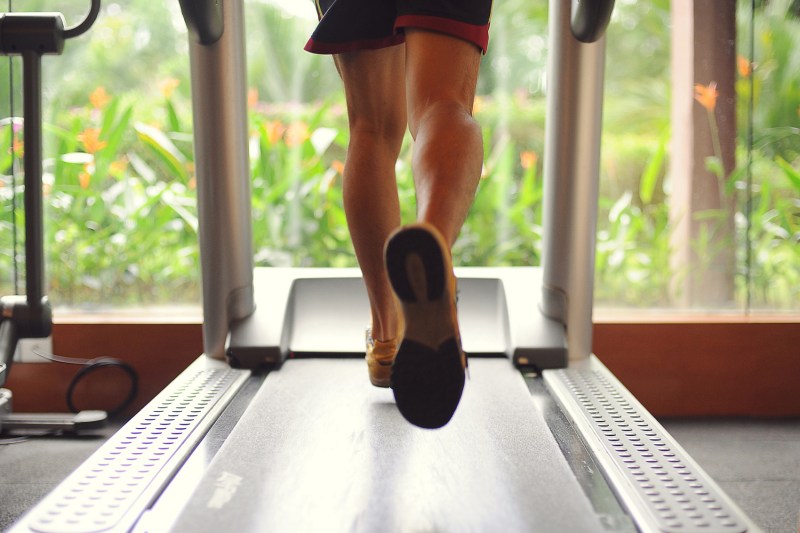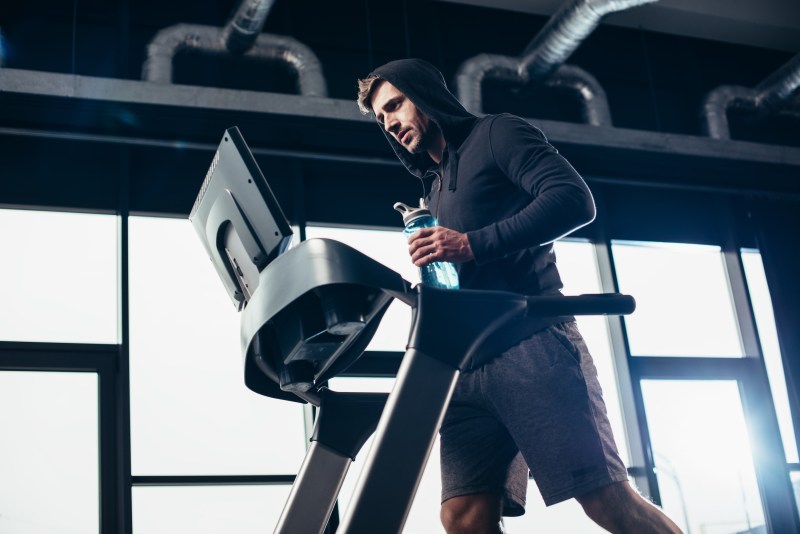Many of us want to be more consistent with our running workouts, but running outside isn’t always the most appealing option. You may not have access to a running route, and extreme temperatures and weather could be a deterrent. This is where treadmill workouts can save the day. Unfortunately, many people find the treadmill a bit tedious and boring, so what can you do to be more consistent?
To get some answers and the best treadmill workout tips, we spoke to Colleen Logan from Icon Fitness — the company behind NordicTrack — and Brian Beckstead from athletic shoe brand Altra. They gave us insight into how to choose the right treadmill, optimal treadmill training, and more.
Getting started

Beckstead, who is a competitive trail runner in his off-hours, uses the treadmill as a regular part of his winter training, mostly for shorter recovery runs, and has a few helpful treadmill workout tips. “Keep it interesting and avoid it becoming repetitious by inserting a lot of inclines. They’re great for strengthening those climbing muscles and are low impact, too, which is important to knee recovery. Of course, they also burn a ton of calories. I also like to use treadmills for speed work where I go hard for two minutes, then easy for a bit, which really breaks up the monotony.”
When she’s not preaching the gospel of connected fitness, Logan unplugs by hiking in the beautiful mountains of her Jackson, Wyoming home. “An ultra runner recommended against ‘more’ hiking as part of my training,” she said. “He recommended focusing on building strength and mobility on the treadmill.”
“Orthopedic surgeons say the best thing you can do is run uphill … but you’ll want a ride back down if you’re running in the real world,” Logan said. “With a treadmill, you’ll get a great cardio workout while protecting your knees. We also recommend wearing a weight vest or carrying a backpack filled with water bottles to burn some extra calories.”
“You’ll want to adjust to at least a 2% to 3% incline,” Beckstead concured, “because downhill can cause you to overstrike and pull hamstrings. With even a slight incline, you’ll run with better technique, and your biomechanics are better.”
The most important thing, Logan pointed out, is not to focus on just exercise. “Do some strength and mobility training, too: Many of our iFit (see below) workouts get you off the treadmill to do a plank, crunches, or some other movement during the workout.”
Beckstead also recommended listening to music to keep motivated or his go-to, audible books. “I got into them because I travel a lot. I like how I can keep my mind occupied and engage in deeper thinking about the future.”
Logan pointed out that “if you’ve decided to participate in ‘Dry January,’ this is a great time to get started with a treadmill regimen. Between dropping the empty calories of cocktails and adding the benefits of a regular cardio routine, you’ll be able to see progress quickly, which will help you stay motivated.”
Equipment check

Now that you’re sold on the idea, it’s time to find the right treadmill! If you belong to a gym, chances are that decision has already been made. If that’s what you have in mind, take a lap to the next section, and we’ll meet you there.
“We’ve worked with ultra-marathoners, and they love a good workout,” Logan stated. “The one that we recommend for the really elite runner is our X32i. You’ll want to get the widest incline range and the most horsepower you can afford.”
For around $3,500, you’ll be getting the top end of NordicTrack’s iFit “connected fitness” experience, featuring everything from the very winter run you’re trying to avoid to famous running spots from around the world (HD videos were shot on-site spanning seven continents and 40 countries). Each is led by a coach, and the treadmill will automatically adjust for speed and incline to virtually match the terrain of the chosen location.
Studio classes are also available through iFit, which are preprogrammed by the trainer leading the set. Start by entering some basic information about your current state of health and personal training goals, and the iFit software takes over from there. Through the brand’s partnership with Google Maps, you can even re-create that run from your high school cross-country team days or prep for the actual course of an upcoming 5K or marathon.
“You can pre-run the infamous ‘Heartbreak Hill’ from the Boston Marathon, for example, and be totally prepared for the real thing,” Logan emphasized.
Of course, there’s also a more basic model that starts at around $900 that may not offer as much range in terms of incline, and you’ll rely on your own smartphone or tablet to provide the connected fitness angle, but it still offers a great workout.
Logan recommended stopping by Best Buy to check out treadmills in person. “BestBuy has made a real commitment to exploring the merging of technology and fitness,” she pointed out. “Also, look for CHp versus Hp; continuous horsepower versus horsepower. The unit should have a good motor, but a higher continuous horsepower — and larger rollers — make for a much smoother ride. It’s the difference between driving up a mountain in an economy car as opposed to one with a V8 engine.”
(Author’s note: I had the opportunity to try out the NordicTrack X22i. It was truly the Tesla of treadmills. The high-def touchscreen offered a crisper, clearer picture than my television at home, and the coach who was leading the run — through the picturesque Fitz Roy Base in Patagonia — was inspiring and engaging. The equipment itself was sturdy and fluid, and the controls were easy to understand.)
Don’t forget to wear decent running shoes for your workout. But because of the controlled environment, Beckstead said you can be more flexible with your shoes, though you’ll want something that offers enough cushion and balance to handle the high mileage. The Altra Solistice XT is a great cross-trainer that Altra developed for gym workouts that also happens to be great for running.
Clubs and classes

“I like variation,” Beckstead said. “You may miss that with a pure treadmill run, so take a class where the trainer adds some diversity to the run both on and off the unit. Classes are so good for us runners.”
New York City’s Mile High Run Club, for instance, focuses solely on the treadmill experience, offering everything from Dirty 30 workouts — combining focused high-intensity interval training (HIIT) with short active recovery periods — to HIIT classes that incorporate core and kettlebell training, and The Distance, a 60-minute class designed to rack up miles. All the classes are led by certified coaches who are experienced sprinters, road and trail runners, Olympic marathoners, and world-traveled triathletes. Depending on the class and instructor, you may get full-effect dance club-style lighting and music that creates an energizing, convivial — and maybe a bit competitive — environment.
Similarly, many gyms offer classes so you can incorporate a guided treadmill workout into the rest of your workout routine. Equinox, for example, collaborated with Precision Run, another treadmill-focused operation, to bring its classes into select locations, featuring headphone-guided interval training.
Frequently asked questions

Does 12/3/30 actually work?
The 12/3/30 trend has been getting a lot of attention recently, as it provides a goal that nearly anyone can achieve on the treadmill. This workout involves walking at a speed of 3.0 on an incline of 12.0 for 30 minutes. Ideally, you want to keep your hands by your sides for the entire 30 minutes, and this can make the steep incline quite challenging. For most people, 12/3/30 will deliver results with weight loss and improving your cardiovascular health.
How long should you work out on a treadmill?
The time you “should” spend on a treadmill depends on the person. Be realistic with yourself — how much time can you commit to without it feeling overwhelming? Try being on the treadmill for 10 to 15 minutes a few times a week, and then increase time and frequency gradually over a number of weeks.




